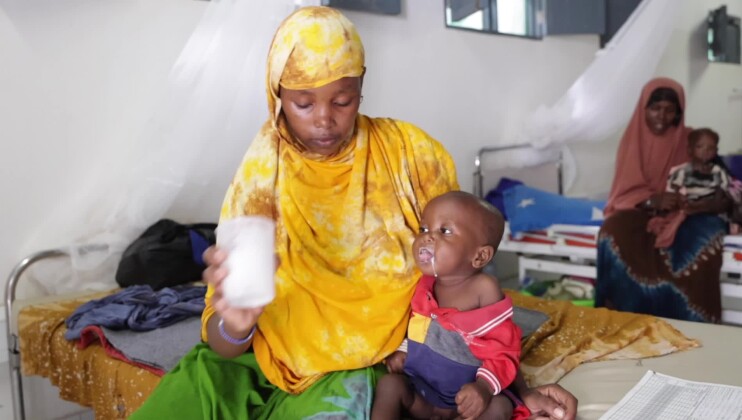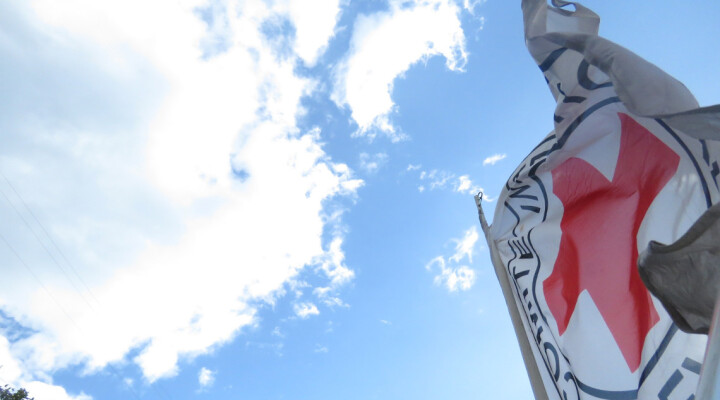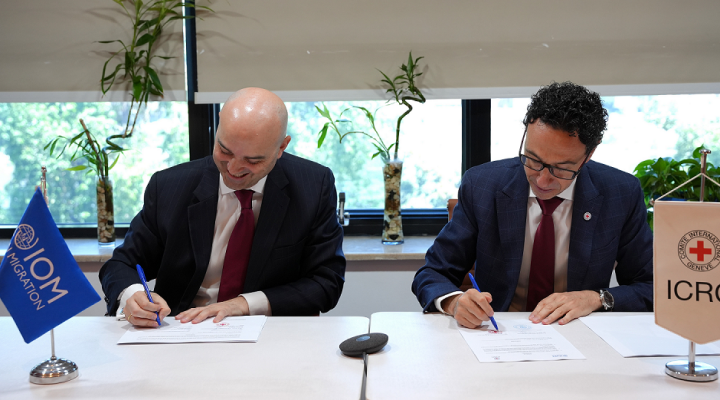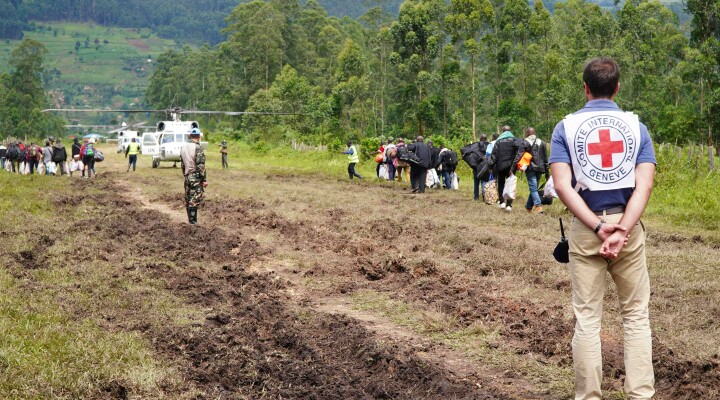Somalia: Malnutrition hits record high as drought persists
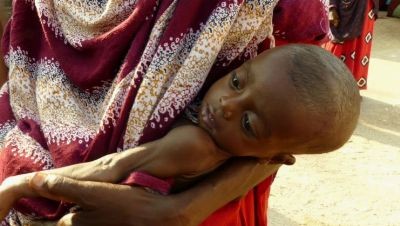
This is a modal window.
More and more children in Somalia are suffering from malnutrition. The drought is worsening, crops have failed, and there are fears of a famine. Children under five are the first to suffer.
Mothers are streaming into Kismayo General Hospital’s stabilisation centre. Supported by the International Committee of the Red Cross, it is one of the few places in South and Central Somalia where malnourished children can be treated. By the end of February this year, 369 new patients had been admitted, a worrying 40 per cent increase on the same period last year.
Among them is Fatuma Ali, with five month old Abdikaafi Jimaale. He weighs just over three kilogrammes, a normal weight for a new born, but not for a five month old. “I’m from the rural area, and the drought has led me here”, explains Fatuma.. “The baby’s illness is why I came. I’m his grandmother, not his mother. He is the first born of my daughter, she has died.”
Abdikaafi Jimaale is not alone. After two failed rainy seasons, over half of Somalia’s population is short of food. Mohamed Gedi, who runs the stabilisation centre, is alarmed by the growing numbers of children who are arriving.
“Since November 2016, we are feeling the strain as the number of patients increase” says Mr Gedi. “These patients are coming from the rural areas, the pastoral areas. The farmers have had their crops fail twice now.”
Children, especially those under five, are a key warning sign of how desperate the food shortage is. Their bodies handle food differently from those of adults: children burn far more energy per kilo of body weight, and that means they need to eat more often. At the centre, the children are weighed, and progress charts with a time line for weight gain are drawn up. Ten month old Abdirahman Bakar Ali came to the centre in January, severely malnourished and suffering from measles. He has made good progress and could be released soon, but his mother Sahra Osman, who has nine other children, is worried about the continued drought.
“We work on the farm,” she explains. “But it’s so dry. The ground is so dry; can you grow anything? Nothing grows in that dry ground. A ground that dry can’t produce.”
“The parents are eating the food their children leave behind,” Sahra continues. “If we don’t get anything we sleep. We are grown ups, we can persevere. But the young children cannot.“
At the centre, the children are put on a therapeutic feeding program: they receive nutritional milk between six and eight times a day, depending on how serious their condition is. Some children have complications: pneumonia, kwashiorkor, or anemia. They are admitted to the Intensive Care Unit. These children often lack the strength to eat, they are listless, their appetite has almost disappeared, and their milk has to be given through a nasal tube.
“The last six months have been really bad,” says Mr Gedi. “It feels like the 2011 drought crisis when refugees fled to Dadaab, {in Kenya.} Then, around 50,000 people died of malnutrition. That is what is making people afraid. Because for the last four months the number of patients keeps increasing.”
The Kismayo Centre provides a safe haven where mothers can stay with their children while they recover. There are washing facilities, and three good meals a day are provided for family members. {Mothers also receive advice and training on breast feeding, and on nutrition.}
But across Somalia, the World Health Organisation estimates that 363,000 children are acutely malnourished, 70,000 in such a serious condition that they will need therapeutic feeding to survive. The Kismayo Centre, and another ICRC supported stabilisation centre in Baidoa, are providing vital, life saving support for some of these children, but there are not enough places for all of them, and the drought continues.
Download this footage from ICRC Video Newsroom
For further information, please contact:
Jason Straziuso, ICRC Nairobi: +254 733 622 026
Pedram Yazdi, ICRC Nairobi: + 254 700 888 131
Aurelie Lachant, ICRC Geneva: +41 79 244 64 05
To find out what the ICRC is doing to assist drought affected people in Somalia, go to
https://www.icrc.org/en/where-we-work/africa/somalia
or visit the ICRC Somalia blog: www. http://blogs.icrc.org/somalia
For more Broll footage from ICRC in Somalia, click here:
https://goo.gl/IBhpEs
https://goo.gl/kX3Uzw
Follow the ICRC on facebook.com/icrc and twitter.com/icrc
SEE PHOTO CAPTIONS DOCUMENT FOR PHOTOS
SHOTLIST
Location: Kismayo, Somalia
Length: 4:48
Format: HD H264 mp4
Camera: Pedram Yazdi
Sound: Somali
ICRC ref: AV610N
Date: March 2017
Copyright: ICRC access all
0:00 – 0:07 Hungry child in arms of relative, tilt up to woman’s face.
0:07 – 0:12 Line of women with hungry children
0:12 – 0:20 Feeding centre staff examining malnourished child
0:20 – 0:32 Therapeutic milk being put into cup, handed to Fatuma Ali, with Abdikaafi Jimaale on ward.
0:32 – 0:47 Fatuma feeding Abdikaafi
0:47 – 0:54 Close up Abdikaafi Jimaale drinking milk
0:54 – 1:04 Soundbite Fatuma Ali (Somali) ““I’m from the rural area, and the drought has led me here. The baby’s illness is why I came. I’m his grandmother, not his mother. He is the first born of my daughter, she has died.”
1:04 – 1:14 Mothers and babies outside centre
1:14 – 1:30 Soundbite Mohamed Gedi, (Somali) “Since November 2016, we are feeling the strain as the number of patients increase. These patients are coming from the rural areas, the pastoral areas. The farmers have had their crops fail twice now.”
1:30 – Baby being weighed on scales1:40
1:40 – 1:54 MCU Baby’s face, weight on scales being adjusted
1:54 – 2:04 CU of weight 3.2 kg
2:04 – 2:09 weight being entered on chart
2:09 – 2:25 Abdirahman Bakar Ali being weighed in sling, then handed to mother Sahra
2:25 - 2:47 Sound bite Sahra Osman (Somali) “We work on the farm. But it’s so dry. The ground is so dry; can you grow anything? Nothing grows in that dry ground. A ground that dry can’t produce. The parents are eating the food their children leave behind. If we don’t get anything we sleep. We are grown ups, we can persevere. But the young children cannot.“
2:47 – 2:53 Centre staff mixing up milk
2:54 – 3:10 Sahra being give milk for Abdirahman Bakar Ali, Walks away down ard.
3:10 – 3:14 MCU Malnourished child with nasal tube.
3:14 – 3:20 MS Child with tube and mother, centre staff assisting.
3:20 – 3:42 Sound bite Mohamed Gedi (Somali) “The last six months have been really bad. It feels like the 2011 drought crisis when refugees fled to Dadaab, {in Kenya.} Then, around 50,000 people died of malnutrition. That is what is making people afraid. Because for the last four months the number of patients keeps increasing.”
3:42 – 3: 47 Sahra washing close, child on back
3:47 – 3:53 MCU Hands, water, clothes, tilt up to woman’s face
3:53 – 3:57 CU tap running
3:57 – 4:16 Food in foreground,women and older children lining up to receive it.
4:16 – 4:22 WS people outside feeding centre
4:22 – 4:28 women sitting on ground at feeding centre, staff in foreground
4:28 – 4:33 women sitting on ground with babies
4:33 – 4:42 Child being weighed in sling
4:42 – 4:48 CU child’s face with nasal tube.
